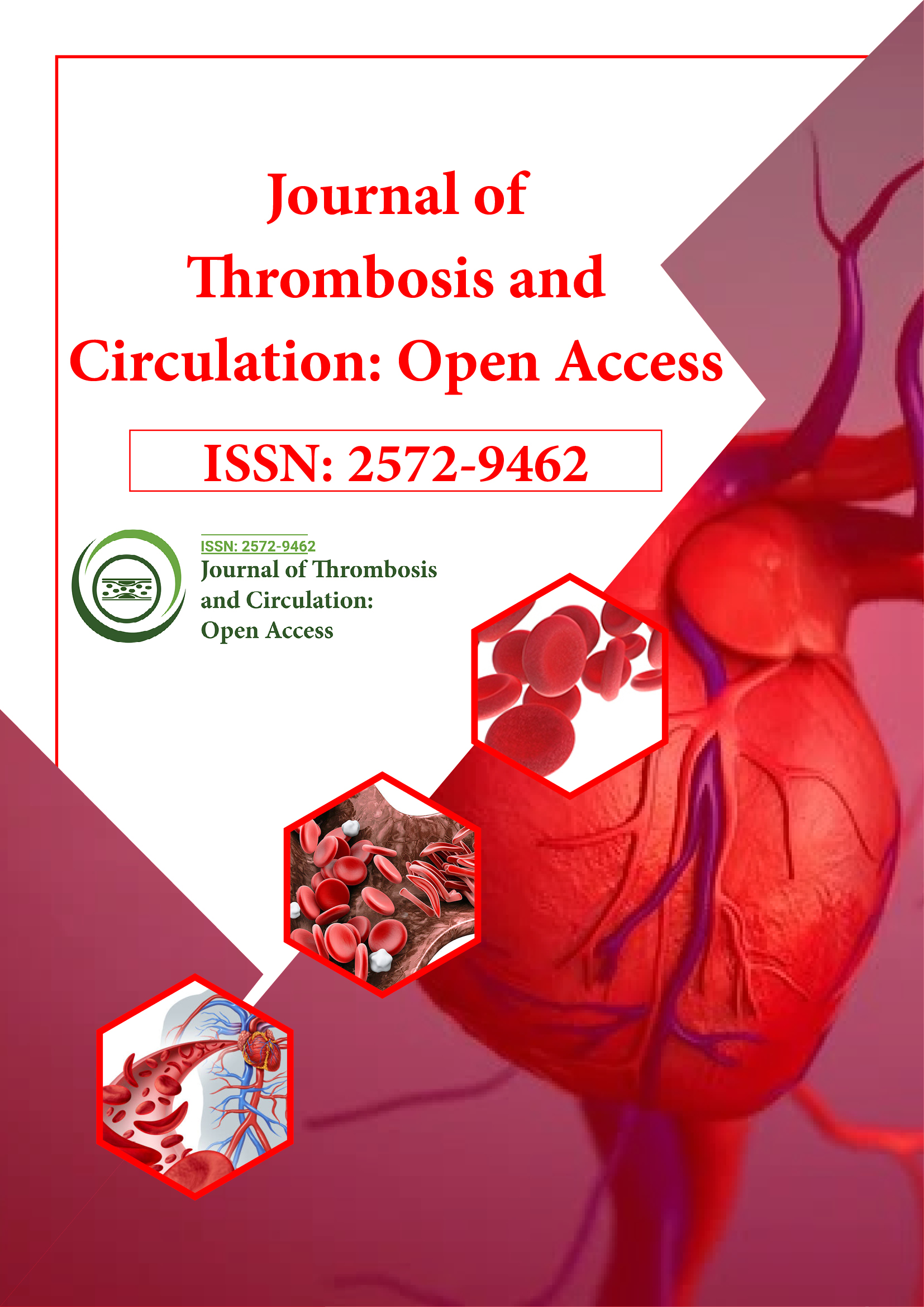Indexed In
- RefSeek
- Hamdard University
- EBSCO A-Z
- Publons
- Google Scholar
Useful Links
Share This Page
Journal Flyer

Open Access Journals
- Agri and Aquaculture
- Biochemistry
- Bioinformatics & Systems Biology
- Business & Management
- Chemistry
- Clinical Sciences
- Engineering
- Food & Nutrition
- General Science
- Genetics & Molecular Biology
- Immunology & Microbiology
- Medical Sciences
- Neuroscience & Psychology
- Nursing & Health Care
- Pharmaceutical Sciences
Mini Review - (2020) Volume 6, Issue 6
An Afterlife with Aceruloplasminemia
Anwesha Batra*Received: 23-Dec-2020 Published: 31-Dec-2020, DOI: 10.35248/2572-9462.6.148
Abstract
Aceruloplasminemia is an uncommon autosomal latent infection where a change prompts the nonappearance or brokenness of ceruloplasmin. Lack of this protein prompts the aggregation of iron in different organs; aceruloplasminemia is normally described by diabetes, retinal degeneration and neurological problems. Analysis is associated by the presence with raised degrees of ferritin, paleness, diminished serum copper and nonattendance of ceruloplasmin in serum. Treatment of aceruloplasminemia is mostly founded on the control of iron over-burden.
Introduction
With the expanding consciousness of a strange nearby iron amassing in profoundly affecting neurodegenerative infections like Alzheimer's and Parkinson's sickness (for audit see references Ke and Ming, 2003; Ward et al., 2014), consideration in understanding the characteristics of iron digestion in the mind has consistently raised (Raha et al., 2013; Rouault, 2013). CP is a copper-containing ferroxidase chemical that assumes a critical part in cell iron fare, and has been proposed to have a neuroprotective capacity (Wang and Wang, 2018). In this setting Aceruloplasminemia (ACP) addresses a paradigmatic problem featuring how the deficiency of CP work causes iron aggregation and neurodegeneration. Aceruloplasminemia is an uncommon, grown-up beginning, autosomal passive sickness brought about by transformations in the CP quality, encoding CP. The impedance of CP ferroxidase movement brings about obsessive cell iron maintenance and iron-interceded oxidative harm. The range of clinical signs incorporates gentle microcytic frailty, diabetes mellitus, liver illness, retinopathy, and reformist neurodegeneration because of iron aggregation in the mind and other parenchymal organs (Miyajima and Hosoi, 1993–2018; Kono, 2013). ACP is dynamically grouped into various subgroups of uncommon sicknesses, like neurodegeneration with mind iron gathering (NBIA) (Hogarth, 2015), abnormal microcytic anemias (Camaschella, 2013; Donker et al., 2014; Brissot et al., 2018), and non-HFE iron over-burden disorder (Pietrangelo et al., 2011), contingent upon the experts who see the patients interestingly. Aside from few nervous system specialists and hematologists, the attention to this sickness is poor even among different experts that could capture the patients at different phases of their clinical history, like diabetologists and ophthalmologists. In fact, the generally detailed predictable demonstrative deferral outlines how ACP is under-perceived by and large (Miyajima and Hosoi, 1993– 2018; Vroegindeweij et al., 2015). This addresses a significant issue, since brief analysis, and treatment are vital to forestall neurological intricacies of the infection, which are normally irreversible once settled. In this smaller than normal audit we diagram some significant issues about this uncommon infection, including the restricted information about the study of disease transmission and genotypeaggregate connection, just as the difficulties in finding and treatment. Conclusion Aceruloplasminemia is an uncommon proteiform problem that can be looked by changed experts at various occasions. A serious level of doubt is required, and an appropriate early conclusion is basic. To this end, the biochemical ternion of gentle sickliness with low TSAT and high ferritin levels not because of any conspicuous elective clarification is likely the best hint. The infection ought to be constantly associated regardless with unexplained liver iron over-burden, diabetes mellitus in youthful grownups with no old style hazard factors, just as in grown-up beginning neurological dysfunctions (social changes, mental problems, extrapyramidal or cerebellar signs) with MRI showing hypointensity in T2 FSE and T2∗ successions in dentate core of cerebellum, basal ganglia and thalamus. A superior comprehension of ACP atomic pathophysiology is required, potentially prompting novel medicines in option in contrast to inadequately viable current alternatives. Thinking about the uncommonness of ACP and the absence of consistency in cases portrayed, a multicenter worldwide vault ought to be instrumental to improve information about this profoundly negating iron digestion problem.
REFERENCES
- Aschemeyer S, Qiao B, Stefanova D, Valore EV, Sek AC, Ruwe TA, Vieth KR, Jung G, Casu C, Rivella S, Jormakka M. Structure-function analysis of ferroportin defines the binding site and an alternative mechanism of action of hepcidin. Blood, The Journal of the American Society of Hematology. 2018 Feb 22;131(8):899-910.
- Badat M, Kaya B, Telfer P. Combinationâ?ÂÂtherapy with concurrent deferoxamine and deferiprone is effective in treating resistant cardiac ironâ?ÂÂloading in aceruloplasminaemia. British journal of haematology. 2015 Nov;171(3):430-2.
- Bento I, Peixoto C, Zaitsev VN, Lindley PF. Ceruloplasmin revisited: structural and functional roles of various metal cation-binding sites. Acta Crystallographica Section D: Biological Crystallography. 2007 Feb 1;63(2):240-8.
- Breuer W, Hershko C, Cabantchik ZI. The importance of non-transferrin bound iron in disorders of iron metabolism. Transfusion science. 2000 Dec 1;23(3):185-92.
- Brissot P, Bernard DG, Brissot E, Loréal O, Troadec MB. Rare anemias due to genetic iron metabolism defects. Mutation Research/Reviews in Mutation Research. 2018 Jul 1;777:52-63.
